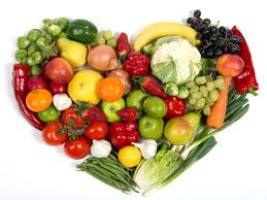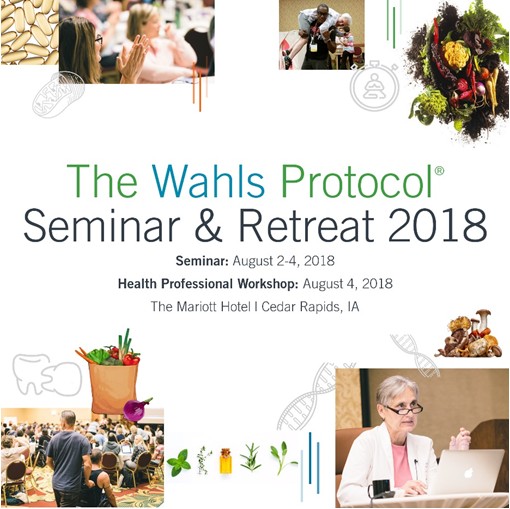

Nutrients are involved in a variety of chemical reactions in the body. As Pollen writes, “Foods are essentially the sum of their nutrient parts” (Pollen 2008, 28). In chapter 1 of my book, Your Longevity Blueprint, I explained the process of digestion. After food is digested, nutrients are transported through the body to assist in all the metabolic processes that happen in our cells and that are necessary for life. The nutrients transporting themselves throughout your body is a little like moving through the rooms in a house in which each room has a door that is locked. In order to move from room to room, you must have the key to unlock the door. The same is true with your body.
 Every cell in your body has a receptor site that receptors bind to, like a key fitting into the keyhole. For that receptor to bind/fit correctly, to unlock the door, your body requires all the micronutrients listed in this chapter. As Dr. Terry Wahls states, “When the cells aren’t getting what they need, the body doesn’t work right, and something (usually many somethings) will go wrong somewhere…your mitochondria won’t produce energy efficiently and that can eventually launch a chronic disease process” (Wahls 2014, 22–23). Wahls has created what she calls the Wahls protocol in effort to teach individuals how to feed their mitochondria and nurture their cells. This is how she was able to overcome her multiple sclerosis, get out of her wheelchair, and take her life back. Click here for more information.
Every cell in your body has a receptor site that receptors bind to, like a key fitting into the keyhole. For that receptor to bind/fit correctly, to unlock the door, your body requires all the micronutrients listed in this chapter. As Dr. Terry Wahls states, “When the cells aren’t getting what they need, the body doesn’t work right, and something (usually many somethings) will go wrong somewhere…your mitochondria won’t produce energy efficiently and that can eventually launch a chronic disease process” (Wahls 2014, 22–23). Wahls has created what she calls the Wahls protocol in effort to teach individuals how to feed their mitochondria and nurture their cells. This is how she was able to overcome her multiple sclerosis, get out of her wheelchair, and take her life back. Click here for more information.
I’m honored to be speaking at her 2018 Seminar and Retreat on the role of Hormones in Autoimmune disease. To attend, register here.
As I discuss in chapter 3, each of us has inherited good and bad genes. Having the proper balance of the nutrients discussed in chapter 4, will help keep your genes functioning as they should. The body is composed of billions of cells, groups, enzymes, and systems that work miraculously together, keeping all your body functions processing appropriately. Enzymes are proteins that catalyze a chemical reaction. Some enzymes need helpers or partners. A cofactor is a non-protein “helper” chemical compound bound to and needed by the protein. Iron and zinc are examples of cofactors. A coenzyme is a non-protein “partner” molecule that carries chemical groups between enzymes. Vitamins are good examples of coenzymes. Cofactors and coenzymes are required for biochemical reactions in our bodies. I know this sound confusing but bringing it back to the basics, you don’t want to be deficient on nutrients as your cells won’t be able to do what they need to, they won’t have the energy necessary for all the processes your body needs!
What dose of each nutrient do you need every day?
The answer varies from person to person and from day to day. The Food and Nutrition Board of the National Academy of Science developed the recommended daily allowance, which you know as the recommended dietary allowances, or RDAs, back in 1943. These recommendations have now turned into the reference dietary intakes (RDI). These guidelines were essentially created around war time when determining exactly what military personnel needed in the form of nutrition. At the time, there were a number of draftee rejections due to vitamin deficiencies. What’s important to note is that these recommendations haven’t changed despite our depleted soils, and despite the decline in nutrients in our foods. Also, we now know that our genes influence our need for nutrients, and that genes vary from person to person. The RDI takes none of that into consideration.
It’s important to note that the RDIs are the absolute minimum necessary to prevent a deficient state; they are not about promoting health. They essentially mean that you have to take X amount of vitamin C to avoid getting scurvy. However, those recommendations are not the doses to truly prevent disease, to replace what your combination of drugs robs you of, to make up for your three cups of coffee per day, or to replete what running a marathon depleted in you. If you don’t have optimal levels of all the nutrients listed in Chapter 4 of my book, you run the risk for chronic disease and cancer. Researchers in the Journal of the American Medical Association stated, “Suboptimal vitamin states are associated with many chronic diseases including cardiovascular disease, cancer, and osteoporosis” (Fletcher and Fairfield 2002). RDIs are also based on a two thousand-calorie per- day diet. How many individuals eating the Standard American Diet (SAD) consume far more calories than that? So, the RDIs are a great place to start; however, most of my patients require much higher doses daily. Remember, Dr. Wahl’s says, “As you feed your cells what they need, your cells will rebuild you” (2014).
Want to know what nutrients you need personally? We offer an amazing test for that which I will discuss in an upcoming blog.
Want to get started on a high quality multivitamin with or without iron? Check out these links to some of our top selling products!
Complete Multi
Complete Multi with Iron
Watch for next week’s blog on why are we nutritionally deficient and how our food has lost nutrients.

